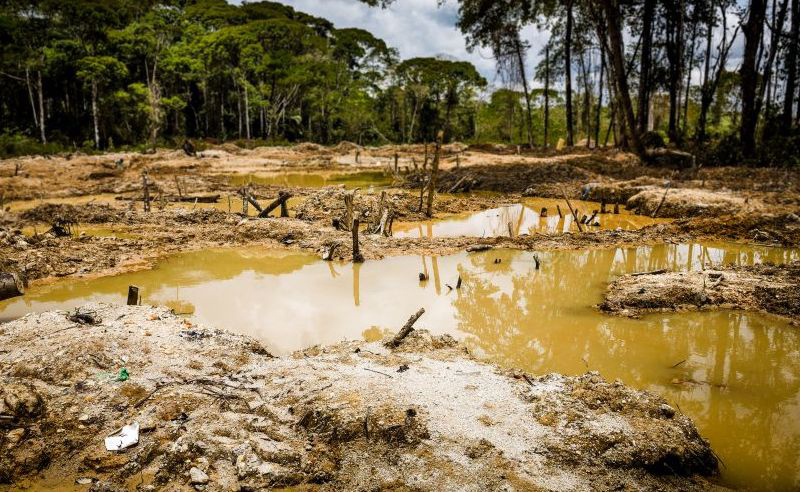This week concluded the international litigation between Infinito Gold and Costa Rica around the Crucitas mine. This means that Costa Rica will no longer have to pay Infinito Gold $400 million in compensation, after that company was stripped of the concession to open the mine. Saving that money is clearly good news for our country. However, will environmental and social conditions improve in Cutris, where the mine is located? Although there are no easy solutions here, what can we do to leave behind this cross that weighs so heavily on us?
What we should have done and didn’t do
Despite the international litigation, Costa Rica had to act decisively. Since 2017, clandestine and polluting exploitations began to be reported in that area. An area rich in gold and biodiversity has been degraded environmentally and socially, as a result of the lack of control in the management of water, sediments and mercury. The damage is devastating and this has not only been environmental damage. Cutris has become the center of a clandestine business that is accompanied by prostitution and conditions as unhealthy as they are deplorable.
This has occurred despite the fact that Costa Rican regulations establish that the owner of the land must respond for the contamination of the soil that occurs as a result of the activities carried out in that place. This implies that the Ministry of Health should have forced the owner of the land to carry out studies on soil, surface water and groundwater to measure the impact and propose solutions. As if it were a town from a western movie, in Cutris there seems to be no law or order.
Nor was a multidisciplinary work team established to propose solutions to the complex problems faced by Cutris, taking into account all the aspects: legal, environmental, social, economic and public health. There were some isolated groundwater and occasional evictions: bandages for a situation that requires in-depth solutions and a comprehensive intervention.
What we need to do in the short term
The government will have to act as it has not yet acted in Cutris, through the formation of a multidisciplinary team that is in a position to address the health and environmental emergency in the area. Addressing the social issue does not simply mean getting people out of the place. The process involves supporting the resettlement of some of the people, generating links with companies in the region and encouraging them to insert themselves into the existing economy. Once the population is out of the area, it will be necessary to keep them out, with a permanent police presence, until a solution can be found in the medium term.
In the short term, environmental studies should also be initiated, taking into account sensitive receptors such as the inhabitants of the region, groundwater, watercourses and the animals that live in them. Alliances could be made with national and international universities to define a monitoring strategy and measure the damage, estimate critical areas and be able to take appropriate actions.
We must not allow the government to declare an emergency situation with the purpose of recovering gold and that this situation leads to decisions taken lightly and without adequate studies. It is true that we have a treasure buried in Crucitas, but we must not allow ambition and opportunism to lead us to disregard the environmental and social studies that are required. The options to recover gold from this area are placed in the medium term.
What we could do in the medium term
In the medium term it is possible to exploit the gold that still exists in Crucitas and ensure a rehabilitation of the land, once it has been extracted. Due to the high price of gold in the market, the isolation of that area and the needs of the population, illegal mining will continue to occur in Cutris, unless the entire area is fenced off and permanent security is put in place.
Among the scenarios that would guarantee responsible gold exploitation is the granting of an underground mining concession. Let us remember that the moratorium in Costa Rica only applies to open-pit metal mining. In that case, the concessionaire would have to be asked to rehabilitate the land on the surface. In addition, studies must be carried out to determine if the soil with higher concentrations of gold has been “removed” or if deposits with commercial value still exist.
In addition, for Costa Rica to obtain interesting benefits associated with the extraction of gold from Cutris, it is necessary to modify the Mining Code, so that municipalities receive a tax higher than the 2% that is currently established and that is well below the rates paid in other countries.
On the other hand, it is necessary to bring a mining company with an impeccable reputation for sustainability to the country and establish strict government monitoring processes. Due to Costa Rica’s mining history and the process that occurred with Infinito Gold, it is likely that the largest companies with the best sustainability performance will not be interested in entering the country so as not to affect their reputation. It will be necessary to review whether it is possible to establish terms of reference for this particular concession and to demand specific results.
Let us remember: it is not a question of finding those who give more but those who give better. It is about identifying the ally or allies that, in addition to providing Costa Rica with the benefits associated with the gold that lies in our territory, leaves Cutris in prosperous conditions and with a healthy environment. This second condition is fundamental.

